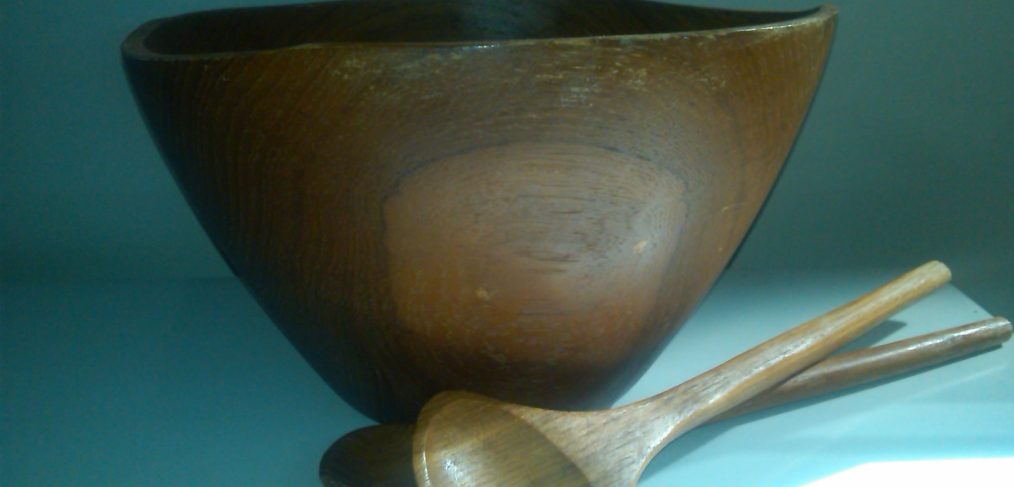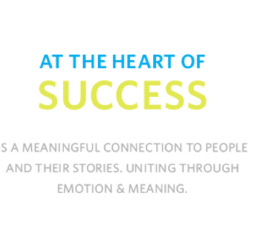
Keith Partridge, A Salad Bowl, and Me (ROI of Storytelling)
The following is my contribution to Raf Steven’s new book, No Story, No Fans. It’s a bit longer than the usual post… but presents an important topic that most of us in marketing and branding are expected to address: what’s the ROI of Storytelling?
If you visit my home, chances are you’d realize that pretty much everything has its place and utilitarian purpose. Having moved quite a bit as an adult, I’ve been fairly good at keeping stuff to a minimum and to those things that I really use. This makes even more sense when you learn that I live in an older rural American home, built in 1885. The home didn’t originally have closets, so the only two that exist today were built during recent renovations. Yes, a woman with just two closets. I have, however, a confession that belies this practicality. If you peer into the large freestanding cupboard where I keep my kitchenware, you’ll see it: an old, worn out wooden salad bowl with matching, broken serving utensils. It just sits there lonely, neglected and unused. I paid rather handsomely for it about six years ago in a moment of whimsy, coughing up $52 plus change for an item I inevitably would never use. Why? Because of its back story. This wasn’t any ordinary, old salad bowl set. No, this little beauty was right there in the middle of my Friday night childhood entertainment – passed about between Keith, Laurie and Shirley on quintessential 1970s American family television. This salad bowl, now my salad bowl, was a Partridge Family salad bowl.
Had I seen this hunk of salad serving junk at a random yard sale, I guarantee I would’ve passed it right by. It’s a pretty plain, old, ordinary mass-produced salad bowl (and not really a nice one at that). I made the purchase fully intent on using it, rationalizing how serving up my little piece of TV history would overshadow my inadequacy as chef. But when this little gem arrived with a “certificate of authenticity” from Ellis Props, I gave it second thought. How could I use it? The salad bowl suddenly increased its value in my mind (not that I’d consider selling something that touched the hand of a Partridge….). In my enthusiasm, I even spent an evening watching old episodes on DVD, just peering for a glimpse of my bowl, our bowl. No luck, but I swear I really do remember watching Laurie Partridge tossing a salad with it….
I tell you this salad bowl tale because I think it makes a great case for the role of storytelling in business. Collectors and sellers of memorabilia (derived from Latin meaning “associated with matters or events worthy to be remembered”) have long known the value of a good story attached to a product. It creates meaning and value for people, even when the object is seemingly utilitarian. A back story of meaning and relevance, whether for product or service, gives people another reason to care. This bond, a shared narrative between you and your customer, can achieve all the great things that marketers desire: loyalty, buzz, advocacy and engagement.
The value for connecting with people through story isn’t confined to memorabilia. Witness the success of the Significant Objects Project, which set out to specifically examine the value of a product’s back story. The project pairs a writer with an object purchased from a thrift store or garage sale for just a few dollars. The author then writes a fictional story about the low-cost item, making it “significant” through a contextual back story, and posts it for sale on eBay. My favorite, for example, is the story of a $2 small metal bottle opener shaped like a hammer that became the symbol of one retired Navy veteran’s strength and power. The resale value: $40. The bottle opener wasn’t a singular success, as the selling price of other objects inflated after association with story. The overall return for the items purchased and storied: how’s a 96% margin? Some $128.74 of random stuff transformed into sales of $3612.51 (with proceeds donated to charity). Proving that one man’s junk is another man’s treasure, thanks to the added value of a good story.
“But I sell tile grout” you say? OK, so you don’t have to focus on your story as part of your marketing strategy. But I think you’re leaving an important marketing and sales tactic on the table if you fail to employ it, no matter what kind of product or service. Consider the closely related parallel we can draw with product design: as manufacturer and marketer you can choose to emphasize design as an asset. Or not. Regardless of your choice, design will still be at play as a fact of nature. All products have an embedded design. The attention you pay to it, however, can be great means for differentiation and added value. Witness the transformation of the $.99 flyswatter, recreated by designer Philippe Starck as a successful $19 mass-produced, household item. That’s a pretty good case study for the value of repositioning a product for higher value. I’m thinking the financial managers liked it too. Like design, story can similarly provide a boost for your business.
Author and educator Pleasant Rowland understood this concept well when she created her company with a simple concept: to provide girls with an alternative to existing dolls. The “American Girl” dolls represented fictional characters from different periods of American history, each packaged with a book to tell the tale at a premium retail price. The accompanying stories struck an emotional chord with Moms, who purchased $1.7 million worth of storied dolls in the first year. By 1998, Rowland sold her “American Girl” franchise to Mattel for a reported $700 million and it has since expanded to include publishing, retail stores, digital media and more. The stories behind the American Girl characters gave the dolls meaning to legions of little girls and created a significant point of differentiation and value in the marketplace. Without the story, the American Girl would’ve just been another doll on the shelf. How’s that for a return on story investment?
Whether you artfully integrate your story into your marketing strategy or not, stories will be told about you, no matter what your industry, product or service. They are embedded in your reason for being, providing a rationale for your position in the minds of people. Your story supports and helps define your brand identity, so why not take time to pay attention to it — editing, crafting and shaping it in a way that increases the value of your offerings? Every business has a story. So why not dig it out, dust it off and purposefully use it?
And come to think of it, maybe it’s about time I served up a Partridge Family salad for dinner after all.



